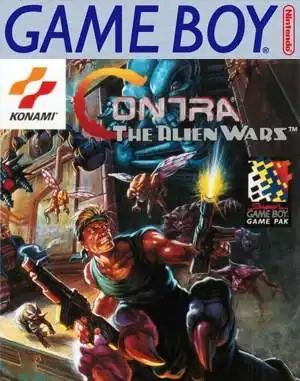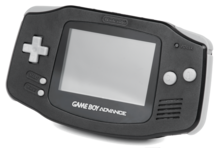When you think of Contra III: The Alien Wars, your mind likely conjures up images of intense, Mode 7-fueled action on the Super Nintendo. It was a landmark title, pushing the hardware and setting a high bar for run 'n' gun gameplay. But lost in the shuffle of its SNES fame is a lesser-known sibling: Contra III The Alien Wars Game Boy. Yes, Konami's explosive sequel actually made the leap to Nintendo's humble Game Boy.
But how exactly did the frantic, large-sprite action of Contra III translate to the small, monochrome (or slightly-less-monochrome) screen of the Game Boy? Let's dive into this often-overlooked port.
The Challenge: Bringing Contra III to Handheld
Adapting a game as visually and mechanically complex as Contra III from the 16-bit Super Nintendo to the 8-bit Game Boy was no small feat. The SNES version boasted huge bosses, dynamic camera effects (thanks to Mode 7), and simultaneous weapon usage. The Game Boy, while revolutionary, had significant limitations in processing power, screen resolution, and color palette.
Konami entrusted the development of the Game Boy port not to their internal team, but to Factor 5, a studio that would later become known for impressive technical achievements on platforms like the Nintendo 64 (with the Star Wars: Rogue Squadron series). This was a promising sign, suggesting a real effort to make the port work.
What Made the Game Boy Port Unique?
Released in late 1994 (known as Probotector 2 in Europe, featuring robots instead of humans, keeping with regional censorship trends), the Game Boy version of Contra III was, by necessity, a streamlined experience.
Several elements from the SNES original had to be cut or altered:
- Omitted Levels: Not all stages made the transition. The iconic overhead Mode 7 stages, for example, were completely absent, which significantly changed the flow and variety compared to the SNES game.
- Simplified Mechanics: The ability to hold and swap between two weapons on the fly was removed. You were back to picking up one power-up at a time, replacing your current weapon. The cool spinning jump attack was also gone.
- Visuals: While impressive for the Game Boy, the detailed environments and massive, multi-jointed bosses of the SNES were scaled down. Sprites were smaller, and the background detail was reduced.
Despite these cuts, the core Contra run 'n' gun action remained. Players still battled hordes of aliens, navigated tricky platforming sections, and faced off against challenging bosses at the end of each stage.
Super Game Boy Enhancements
Where the Game Boy port really shone was when played on the Super Game Boy accessory for the SNES. This provided a limited color palette and custom borders, making the game look significantly better than on a standard Game Boy. It also offered enhanced sound, giving the classic Contra tunes and explosion effects a much-needed boost. Playing it this way felt like a hybrid experience, bridging the gap between handheld and console.
How Did It Stack Up? Reception and Legacy
Upon its release, the Game Boy port of Contra III was generally well-received, especially considering the hardware it was running on. Critics praised Factor 5 for managing to capture the spirit of the SNES game despite the technical compromises. It was seen as a solid, challenging action game in its own right and an impressive technical achievement for the Game Boy.
While it couldn't replicate the full scope and spectacle of the SNES masterpiece, Contra III The Alien Wars Game Boy stood as a testament to Factor 5's skill and the Game Boy's capability. It's a challenging, albeit shorter, blast of Contra goodness that's worth seeking out for retro handheld enthusiasts.
Reliving the Handheld Mayhem Today
Finding an original Game Boy cartridge of Contra III The Alien Wars might take some searching, but it's definitely out there in the retro market. Playing it on original hardware, ideally with a Super Game Boy for the full enhanced experience, is the most authentic way.
For those interested in digital preservation, platforms like Archive.org host historical software libraries that can provide context on how these games were played.
FAQ About Contra III The Alien Wars Game Boy
- Is the Game Boy version of Contra III the same as the SNES game? No, the Game Boy version is a port that omits some levels (like the overhead stages) and simplifies certain mechanics like weapon swapping and the spinning jump due to hardware limitations.
- Who developed the Game Boy port? The Game Boy version of Contra III: The Alien Wars was developed by Factor 5, not Konami's internal team.
- Does the Game Boy version have color graphics? On a standard Game Boy, it's monochrome. However, when played on a Super Game Boy accessory for the SNES, it features a limited color palette and enhanced sound.
- Is the European version different? Yes, the European version is titled Probotector 2: Alien Rebels and replaces the human protagonists with robots, a common practice by Konami at the time for that region.
Conclusion
Contra III The Alien Wars Game Boy might not be the definitive version of the game, but it's a fascinating and commendable adaptation. Factor 5 did an admirable job translating the essence of the SNES classic onto the less powerful handheld. It's a challenging, fast-paced shooter that deserves recognition as a solid entry in the Contra handheld lineage and a cool piece of retro gaming history, especially for those who remember the magic of the Super Game Boy. It proved that even on the go, the alien wars were far from over.


